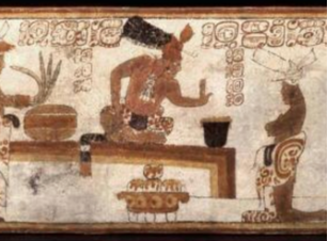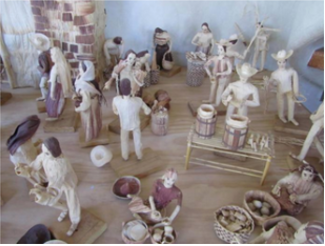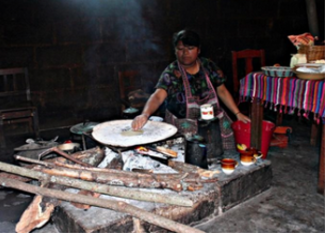Overview
In 2010, Traditional Mexican Cuisine was inscribed on the UNESCO Representative List of the Intangible Cultural Heritage of Humanity. Intangible cultural heritage represents inherited traditions from the past and contemporary practices. In this unit, students will learn about the cultural importance of Mexican cuisine across time by studying Pre-columbian Maya artifacts, colonial codices, modern posters, street art, and other primary sources. Indigenous ethnic diversity, combined with the infusion of Old World foods upon the arrival of the Europeans in the 16th century, has created a cuisine worthy of a place on UNESCO’s list of Intangible Cultural Heritage of Humanity. This unit is in English for use in Art or Social Studies classes and can be adapted to the proficiency level of Spanish language learners. Many of the online sources recommended in this unit are available in English and Spanish.
Lesson Plans: Traditional Mexican Cuisine Across Time
Lesson 1: Cultural Heritage
- Cultural identity, cultural heritage, and food: cultural identity, cultural heritage, and food
Lesson 2: Using Ancient Maya Artifacts to Learn About Indigenous Contributions to Mexican Cuisine
- Tangible history, analysis of ancient objects, object-based observations- activities, digital archive search for ancient Americas objects
Lesson 3:Tracing Mexican Cuisine During the Colonial Period
- Latin American and European influences on Mexican cuisine, the use of food as a tool for power, and the effects of food on society
Lesson 4:Threats to Traditional Mexican Cuisine
- Genetically-modified foods and NAFTA; street art and contemporary expression

This ancient Maya mural shows a vibrant scene of food, culture, and community. A noble figure gestures while seated at a banquet, surrounded by vessels and traditional foods. Scenes like this reveal how deeply rooted Mexican cuisine is in history

This handcrafted scene made from corn husks (known as totomoxtle) celebrates the richness of traditional Mexican cuisine and daily life. Each figure represents people preparing, cooking, and sharing food. From market vendors to tortilla makers, this folk-art piece honors time-honored practices passed down through generations

A woman prepares tortillas by hand over a wood-fired Comal, capturing a timeless tradition rooted in rural Mexican life. Cooking outdoors with firewood, she shapes masa with care, a practice passed down through generations. This scene honors the labor, skill, and cultural pride behind one of Mexico’s most iconic foods.
Web Designers and Research Assistants
2021-2022: Hanna Bloomquist, Andrew Bono, Ava Cosgrove, Samantha Esposito, Joshua Josephy-Zack, Mia Josephy Zack, Alan Koultchaev, Sushant Kunwar, Alex Sweeney, Isabela Whittaker
2020-2021 Riyanshu Bam, Hanna Bloomquist, Ashley Duong, Samantha Esposito, Joshua Josephy-Zack, Mia Josephy Zack, Abigail Pawlowicz
2019-2020 Jason Hackett, Joshua Josephy-Zack, Mia Josephy-Zack